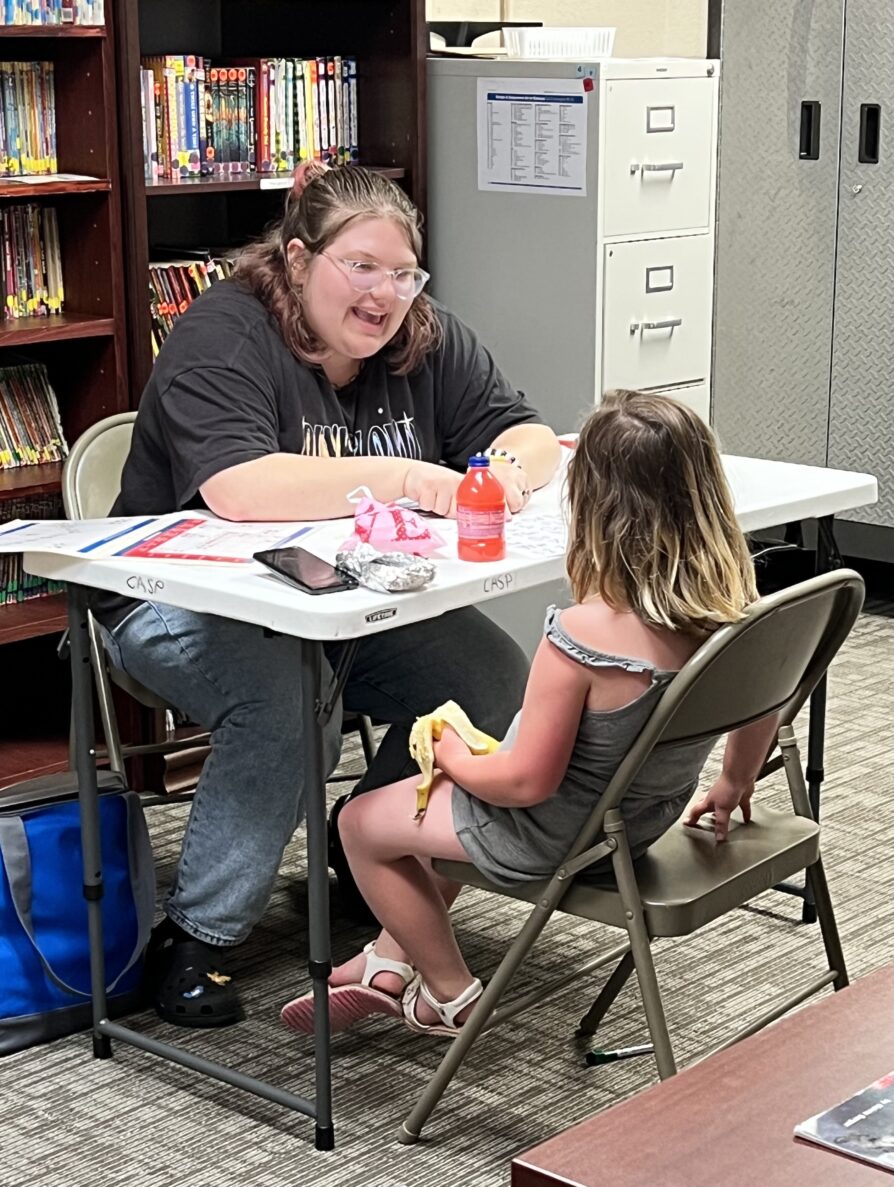CASP Hosts Lights On After School!
During the week of October 20th-24th, CASP will be hosting a “Lights on Afterschool” celebration and Open House at each of it’s programs. CASP celebrates “Lights on Afterschool” each year to bring awareness to the community of the need to support afterschool programs for kids. CASP, along with other nonprofits in the Norman area, will also be showcasing student “Lights on Afterschool” art at the Sooner Fashion Mall during this week.
Below are some statistics that show why afterschool programs are important (Credit to The Afterschool Alliance):
The hours between 3 and 6 p.m. are the peak hours for juvenile crime and experimentation with drugs, alcohol, cigarettes and sex. (Fight Crime: Invest in Kids, 2003)
More than 15 million school-age children (26 percent) are on their own after school. Among them, more than 1 million are in grades K-5.
(Afterschool Alliance, 2009)
Early childhood education expert James Heckman concludes that a complement of early education and participation in afterschool programs can reduce initiating drug use among youth by nearly 50 percent. (University of Chicago, 2006)
The Promising Afterschool Programs Study found that regular participation in high-quality afterschool programs is linked to significant gains in standardized test scores and work habits as well as reductions in behavior problems among disadvantaged students. (University of California at Irvine, 2007)
The Afterschool Alliance’s 2009 Roadmap to Afterschool for All reports that the federal government contributes only 11 percent of the cost of afterschool, while on average, parents pay more than three-quarters (76 percent) of afterschool costs through tuition and fees.
All parents are invited the Open House and “Lights on Afterschool” celebration at their child’s school! You’ll find more information in your parent newsletter!
Below are some previews of the “Lights on Afterschool” artwork from our kids!
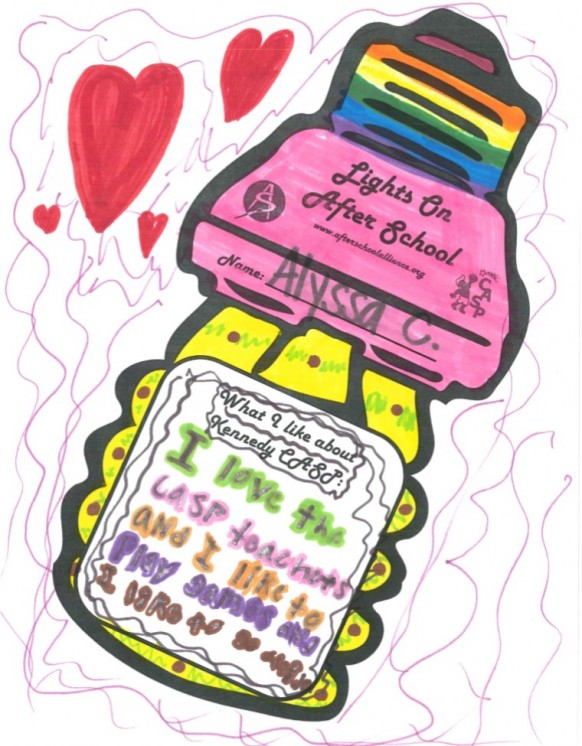
What I like about Kennedy CASP: “I love the CASP teachers and I like to play games and I like to go outside.”
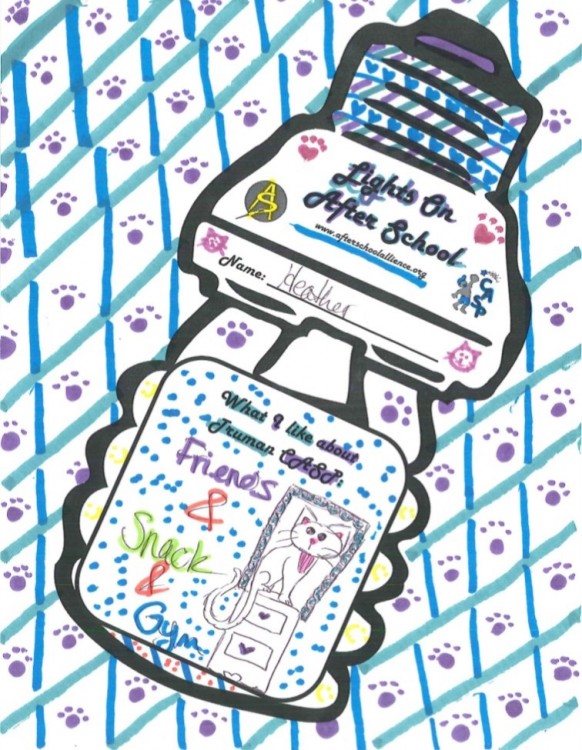
What I like about Truman CASP: “Friends and Snack and Gym”
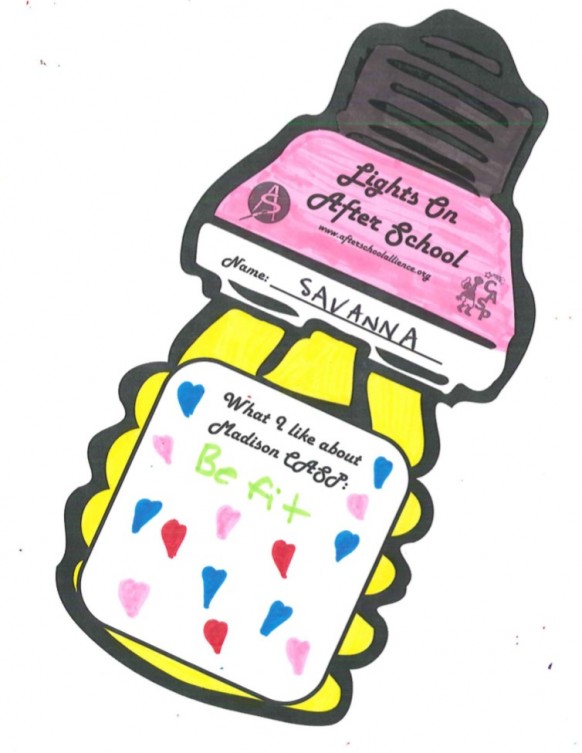
What I like about Madison CASP: “Be Fit”
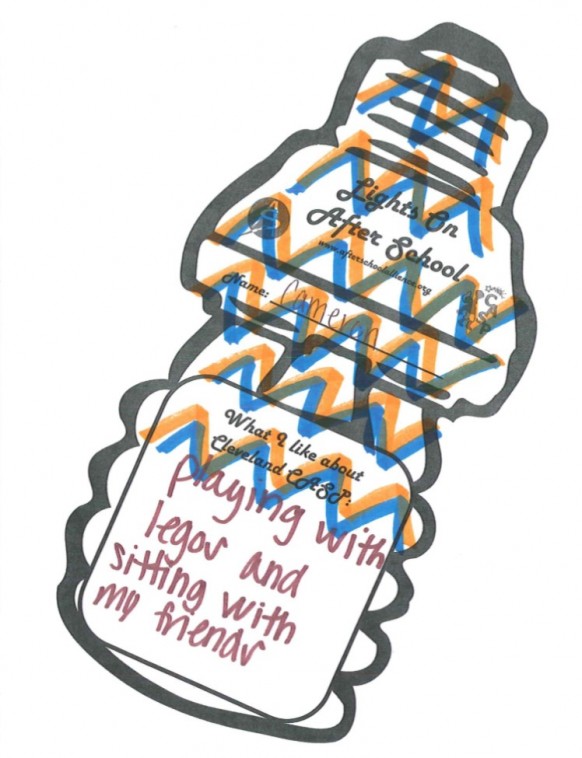
What I like about Cleveland CASP: “Playing with Legos and sitting with my friends.”
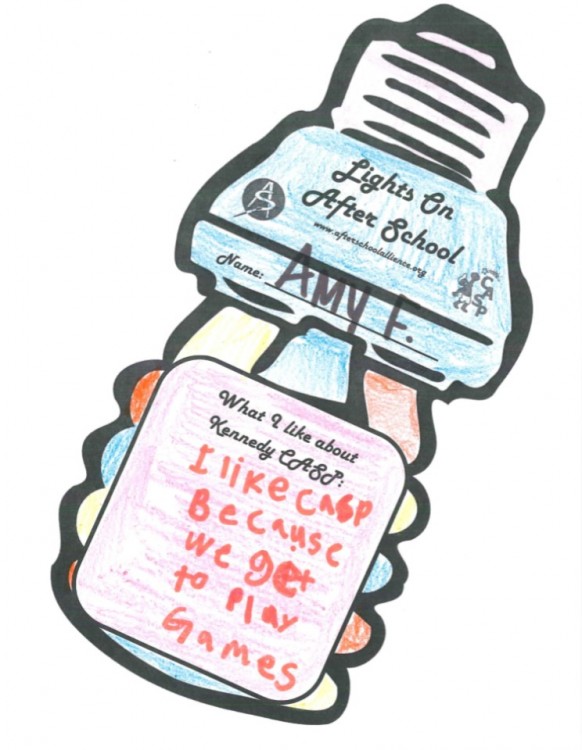
What I like about Kennedy CASP: “I like CASP because we get to play games”
 CASP
CASP
